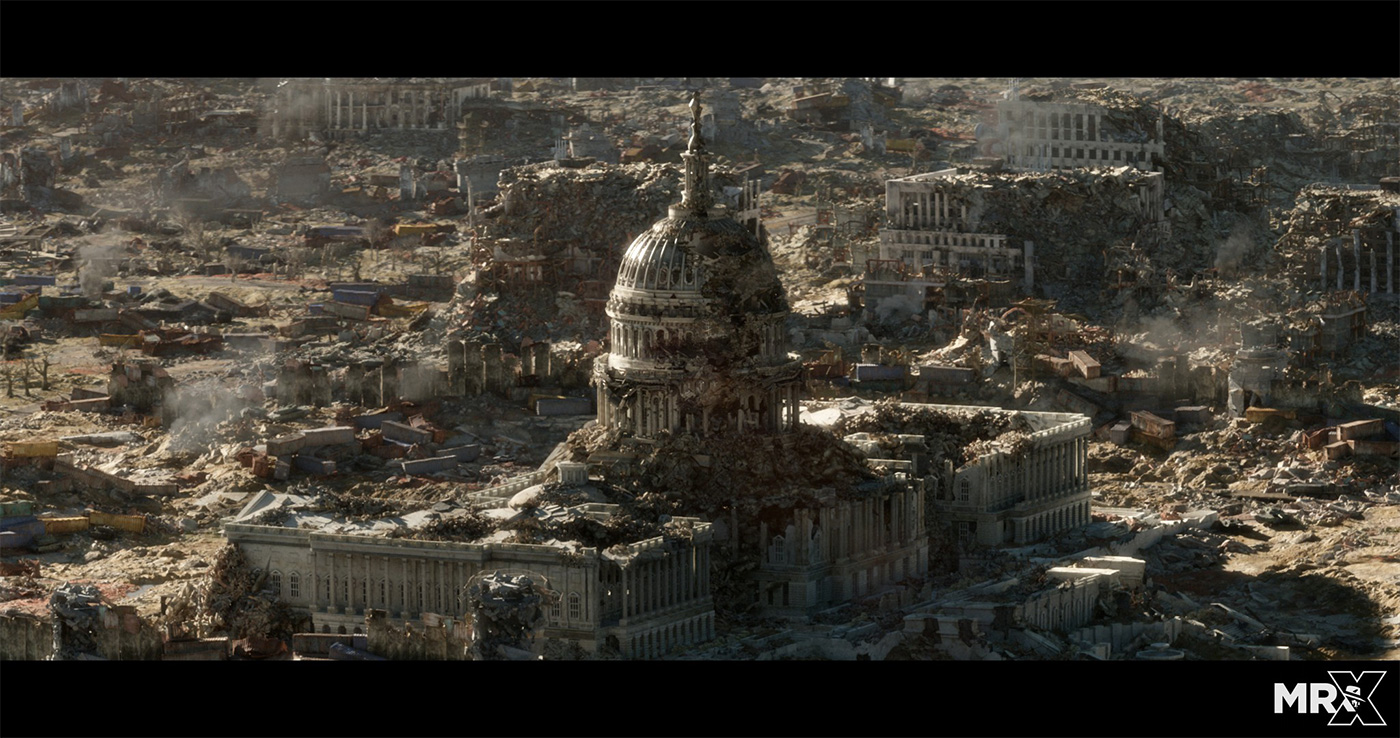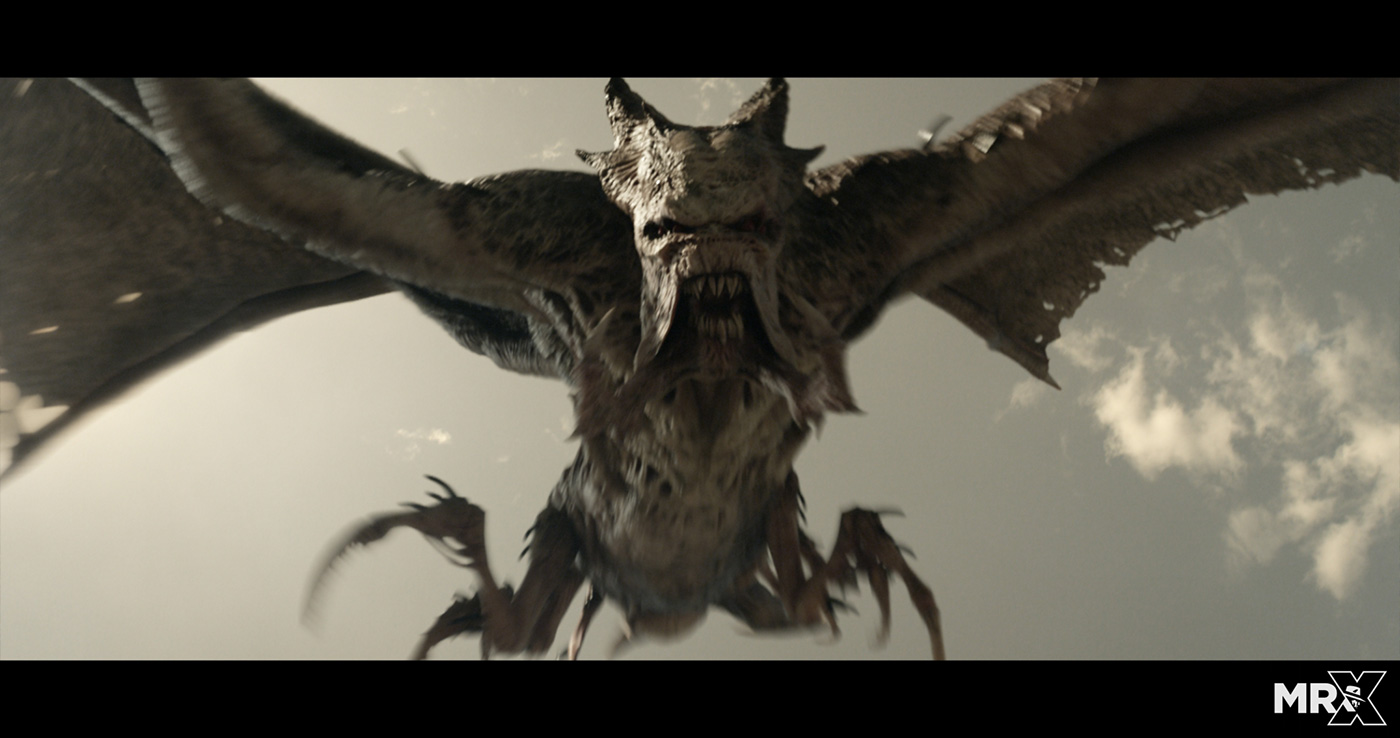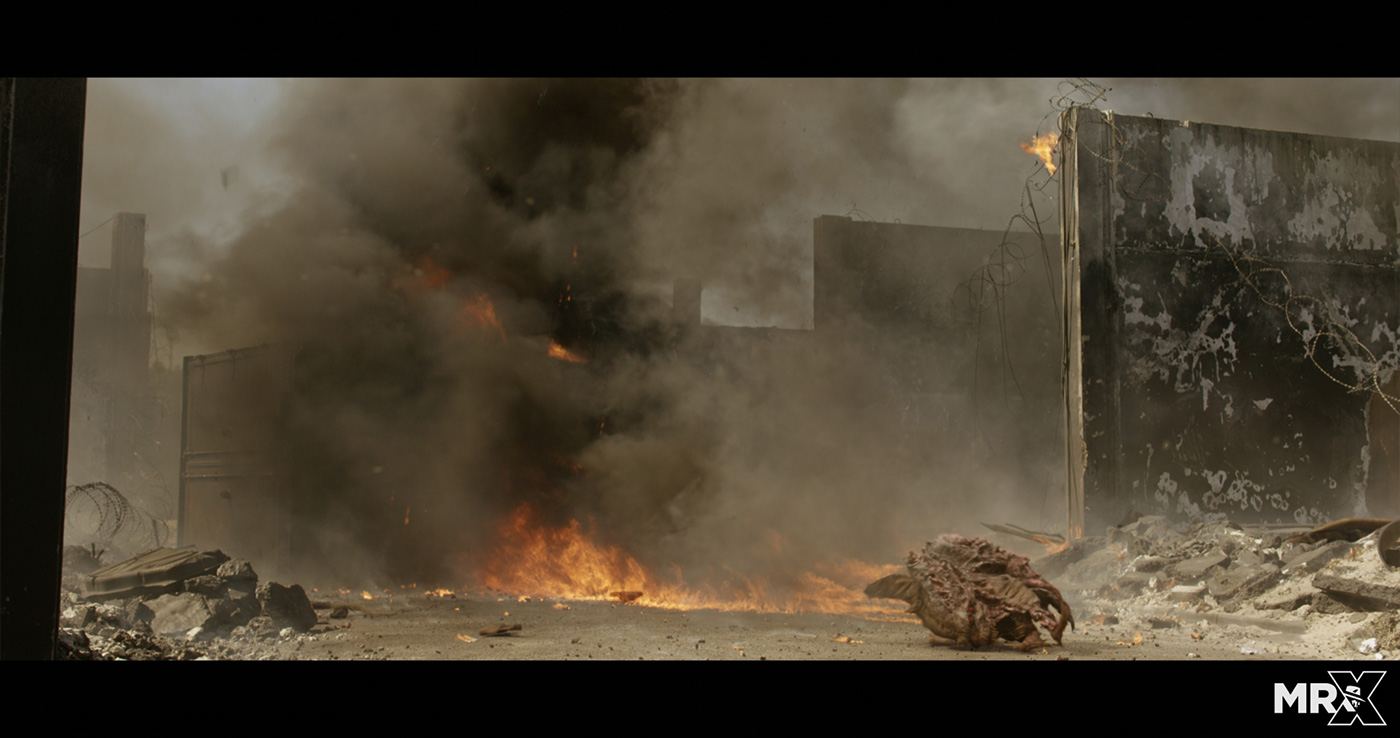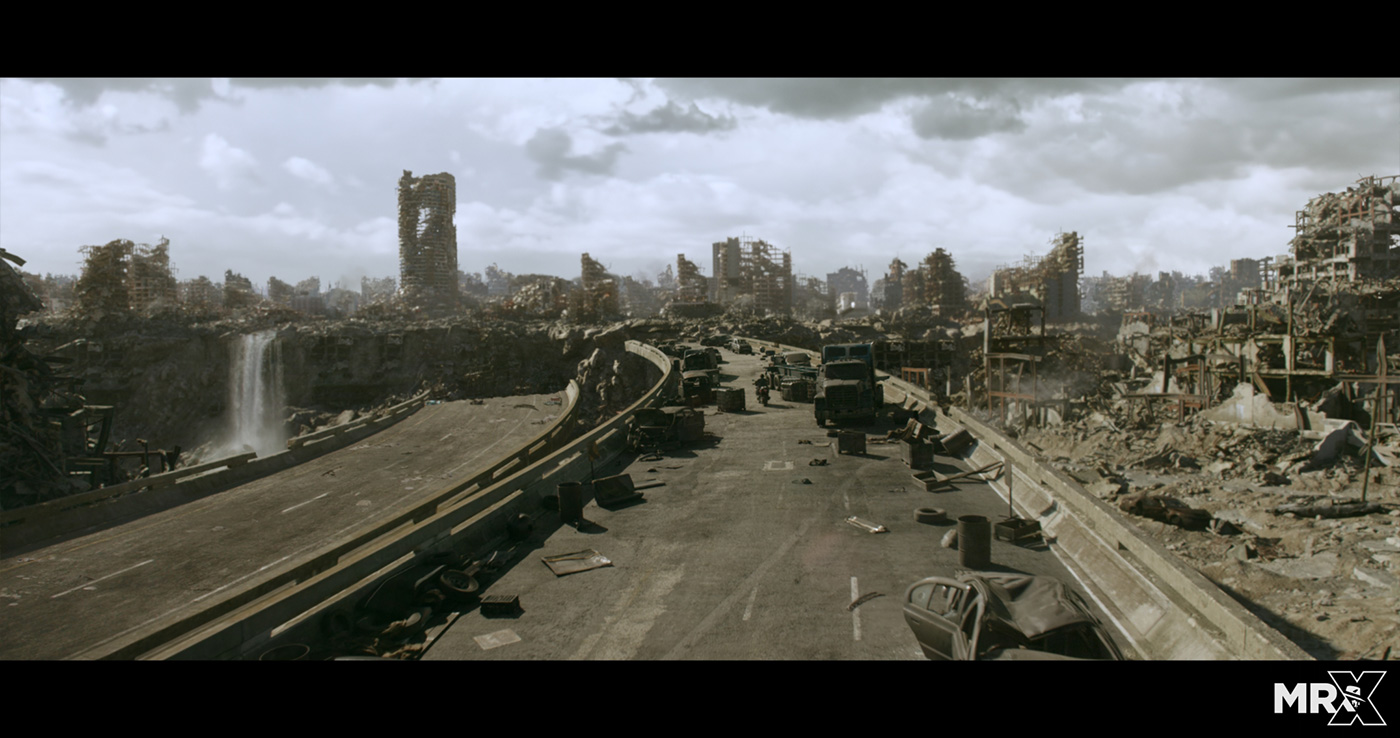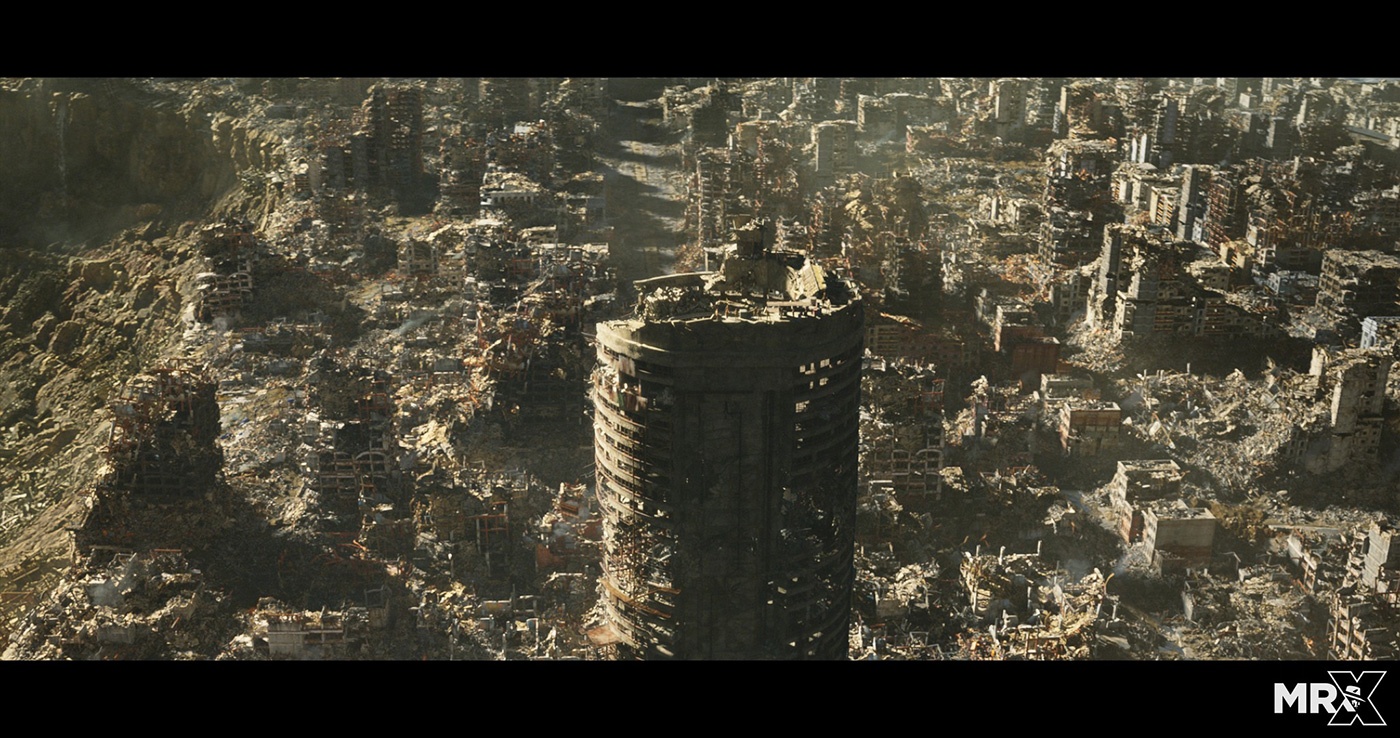Eric Robinson explained to us about the Mr. X‘s work on CARRIE‘s remake in 2014. He then worked on projects such as POMPEII, THE STRAIN, BATES MOTEL and RIDE ALONG 2. He’s back today in the universe of RESIDENT EVIL.
What was your feeling to be back in the Resident Evil universe?
This is the third RESIDENT EVIL film I’ve personally worked on, and the 5th for Mr. X. It’s a fun universe to play around in! There’s a tone and language to these films. Having been immersed in them for so many years, it’s cozy, like putting on pyjamas! We were able to impact the look and feel of the film so dramatically, over such a large part of the films runtime. That makes for a very satisfying project!
How was this new collaboration with director Paul W.S. Anderson?
We all really enjoy working with Paul on his movies. He’s had a long and fruitful collaboration with Mr. X. The best part of working with Paul, is how enthusiastic he is about the work and the film-making process. In his own words, he’s got a dream job! His enthusiasm is infectious. There is a challenge to one-up the previous films in this case, do better, make it cooler, have the most scope possible.
What was his expectations about the visual effects?
Paul’s got a tremendous vision for the look of the worlds in his films. VFX is a key player in the creation of the film. Through the years of collaboration, we’ve gained his trust, so that he can feel comfortable filming a scene, with a huge green-screen component, knowing that we’ll achieve the look in his mind’s eye.
How did you organize the work with VFX Supervisor Dennis Berardi and at Mr. X?
With such a huge amount of VFX work, almost 2000 shots, a divide and conquer approach was needed. Dennis ultimately was responsible for every VFX shot that was done. I focused on some of the specific environments and their corresponding scenes.
Mr. X have worked on all the Resident Evil movies. How does this experience helps you for this show?
It’s a huge benefit. Beyond the practicalities of having a library of relevant assets it’s knowing the history of the films, being able to refer to specific shots from previous films, sometimes with the intent of bettering the effect from the past, or avoiding potential pitfalls.
The RESIDENT EVIL films have some iconic visuals. For example, pulling the camera back from a closeup, to a super wide shot, like when Alice is on the cut-off bridge (using drone footage), or just before the heroes descend into the massive blast hole in Racoon City (using a cable-cam). Getting a camera move on set that can be taken over by a CG camera in VFX to accomplish a seamless move is tricky, but easier having done similar work before.
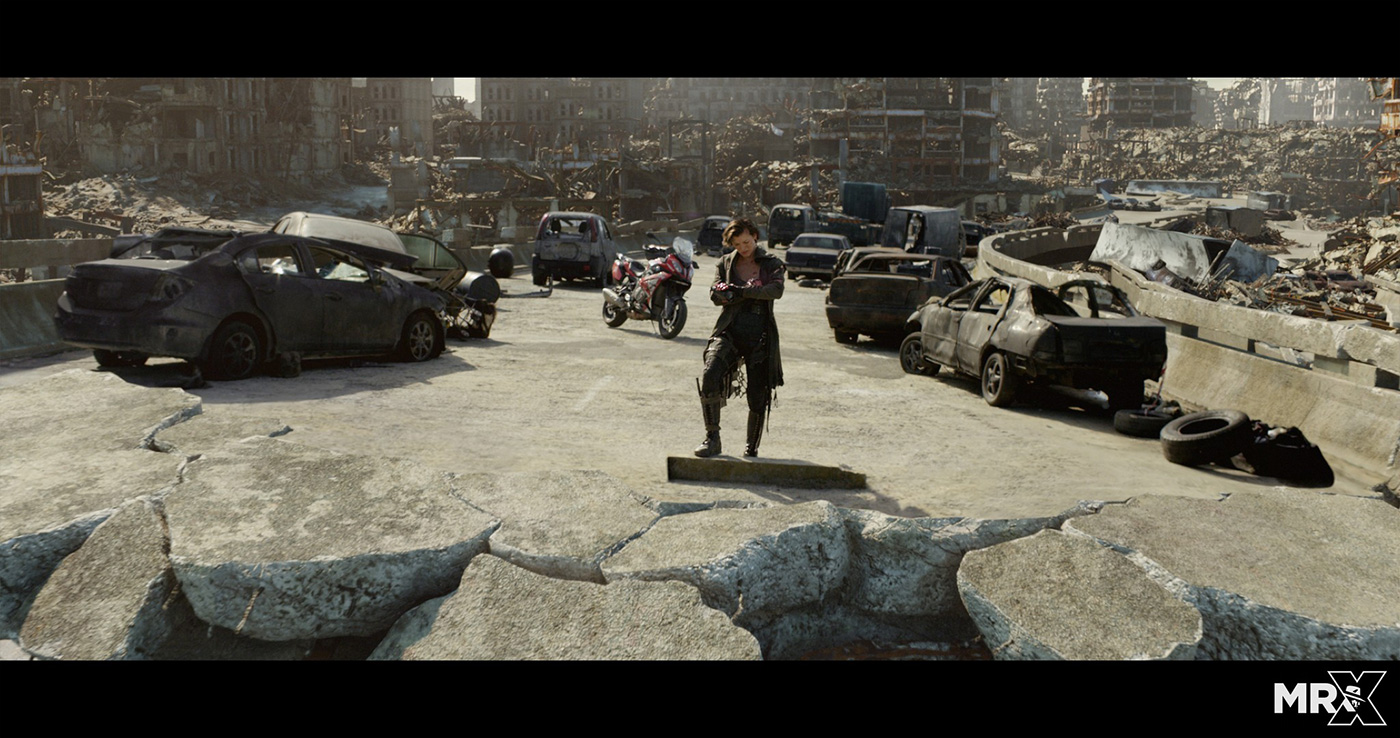
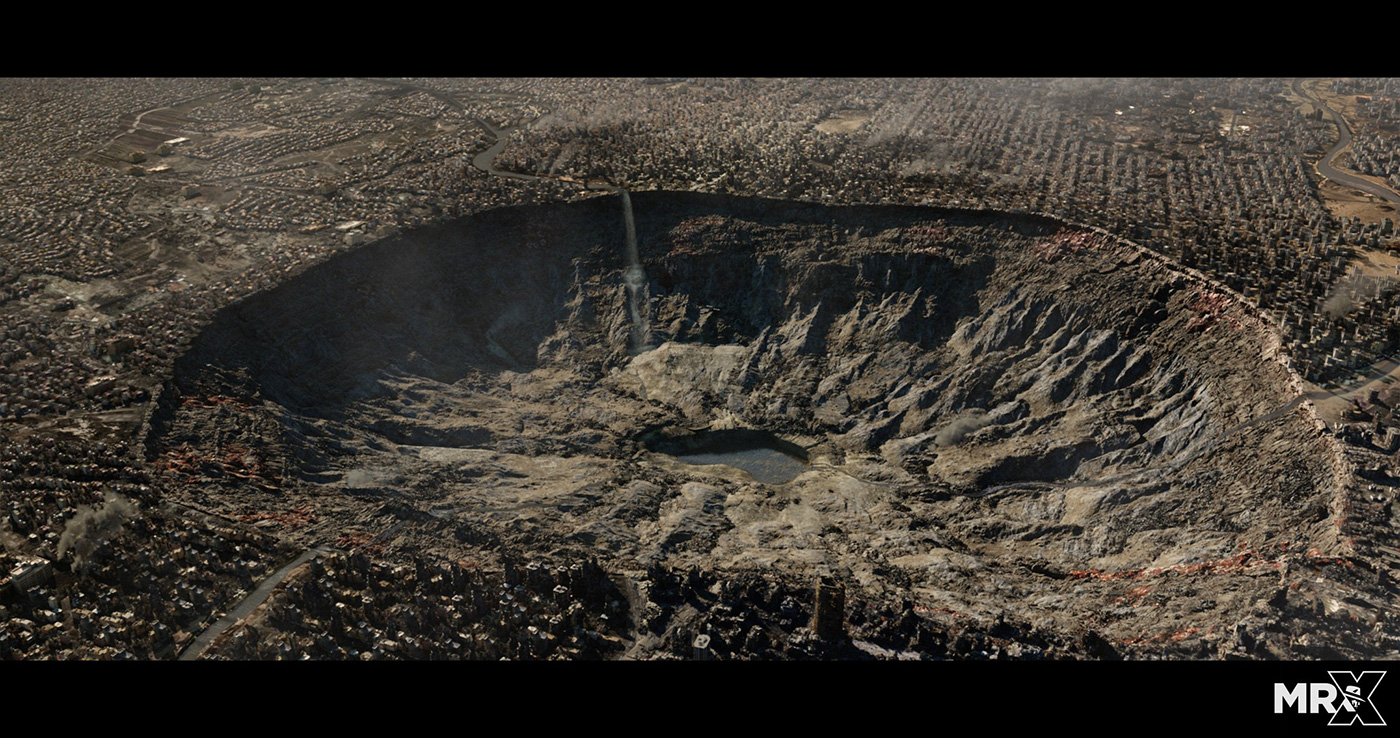
That’s one of most ambitious project at Mr. X. How did you adapt your pipeline to handle it?
This was definitely the biggest project in Mr X’s history. More important than pipeline is having a great team of dedicated pro’s holding it all together! We have a super team of producers, PM’s and coordinators that keep everything moving. Luke Groves, VFX Producer worked tirelessly, and with a an awesome positive attitude. Trey Harrell, DFX Supervisor, did a fantastic job driving asset creation, guiding lighters, « cowboying » shots, while putting out any and all fires that popped up. PM’s Nick Colangelo, Danni Henderson keeping everyone focused.
Many creatures are back. How did you enhanced their models and rigs since the previous movie?
Everything gets an update! There was some overlap in creatures, but it was actually, mostly new work. Undead were largely animated with motion capture, so that was a driving force in rig design.
Can you explain in detail about the creation of the big flying creature?
The winged creature that was featured in the attack on Washington, at the end of RE5 was completely rebuilt to fit into the action of the new film. In The Final Chapter scene where it’s attacking Alice in the HUMMER, it needed to do so much more than in the previous film. Tentacles and claws were refined to allow for maximum danger to Alice.
Can you tell us more about the rigging challenge with the wings and tails?
Our animation director, Den Turner, lead the charge for animation design, with drove the rigging needs for this creature. The wings were animated and then a ncloth sim was used to get the rippling displacement as they flapped.
How did you handle his animation?
The challenge with this creature was to make it fly believably while maintaining a sense of it’s massive scale. Pete Dydo, our animation Lead for the show kept the team focused and working on a common goal. The creature had some design inspiration from dragons, but also from spiders. When it’s picking itself up, after crashing into a helicopter in the Washington environment, it uses it’s wings like claws, and features the iconic Resident Evil cross shape.
With so many creatures, how did you manage their interactions on-set and with the actors?
The most fun was in the Bloodshot sequence. We had one of the key stunt performers (Owen MacRea) playing the Bloodshot, to use both for interaction with Alice, and as a visual base for the animation. He was able to add a lot of energy to the filming of the scene, and give the camera operators something to work with. The Bloodshoot creature is bigger and taller than Owen, so in many shots, very little paintout was required. For some shots, we used raised platforms on set, to get the correct height relationship between the Bloodshot and Alice. Having something real on set for actors to dial into really helps in getting a believable relationship between them and what eventually becomes a CG creature. To aid in animation we used two Sony A7S’s as witness cams. Their low-light performance helped, as the scene and set was very moodily lit.
The Undead Dogs were all CG all the time. The stunts team designed two of the takedown moments with jerk rigs, which we painted out, then added the dogs.
Can you tell us more about your collaboration with the stunts and SFX teams?
As always there is a lot collaboration between these three departments. For the motorcycle chase scene, there was a combination of SPFX gas bombs and CG explosions, representing missile-fire. When the winged creature is blown to bits after the HUMVEE chase, we supplemented the SPFX explosion with digital debris, and CG Winged Creature parts. Gore-y mess!
There are many huge devastated environments. How did you created them?
Painstaking attention to detail! Many of the wide environment shots were based on dynamic helicopter moves, so in most cases, DMP or 2.5D projections were not going to work. We built many city blocks of destroyed Raccoon City, which we then kit-bashed to fill frame. This was for the bulk of nondescript environment.
For the Peak Tower, the centre of the human’s defense, was based on the Ponte City Apartments in Johannesburg, we began with a faithful representation of the actual building, then damage was added to fit into Paul’s vision. We went for a very erratic, cut-out, silhouette, so that the damage would read in super wides. Once the damage was revealed, by essentially cutting away portions of the building, new post apocalyptic elements were added that matched into the set builds. Maya was used for the modeling, Mari and Photoshop for textures.
What references and indications did you received to created these environments?
Sadly there is currently too much real-world reference for decimated environments. War torn, rubble filled cities were the reference.
Which one was the most complicated to created and why?
It’s a toss up between Washington, and Raccoon City. They both had their unique challenges.
Washington needed to represent the aftermath of the final shot of RE5, while retaining enough character to be recognizable as Washington. We unarchived the White House model from RE5 and added lots of damage to help with the war-torn feeling.
Racoon City had a lot more scope. We needed to see it from many views, including aerial shots. In the frame below, the FG highway was practical, from Cape Town South Africa, practical burned out cars were dressed in and then everything else was CG.
Can you explain in details about the creation of the zombies army?
Undead were freshly modeled to match the look of the makeup and wardrobe used on set. The Undead horde has been roaming the post apocalyptic world for years! They are dirtier, more torn up, skinnier, than before. For this reason, their colour pallet was reduced to fit into this thinking. Dirty greys and browns dominated.
How did you manage their animation and interaction?
Whenever possible we had live-action foreground Undead. This helped get us some practical shots and gave Alice eyeline to the nearest Undead. There were shots where practical Undead were painted out, replaced with CG Undead for performance reasons. The CG Undead horde was largely animated with motion capture elements which was with a Xsens Motion Capture suit. This was piped through a Massive sim. There were instances where we would have a proposed final, then had to remove 1 Undead that was too distracting!
Many explosions happened during the show. How did you created these FX?
Explosions and fire were created with Houdini. On set in South Africa, we filmed various tests with the SPFX team, so that we could match our renders into real fire as closely as possible. The highlight of this was filming a live gasoline waterfall, and lighting it on fire! This was filmed for reference only! And in a safe environment. As the gasoline waterfall scene was filmed in the Ponte City Apartments, there was no way we could use that much SPFX fire. It’s an occupied condo/highrise, so we were limited with how much real fire could be used during filming.
Was there a shot or a sequence that prevented you from sleep?
The undead dogs sequence was a frightening one. The dogs are CG only in this film. The setting for the scene, is a the massive crater in Raccoon City. Filmed in a quarry outside Cape Town SA. Since the scene is moonlit, dark, misty, there wasn’t a lot of key-light, or contrast that we could mimic in our lighting of the CG dogs. It was too easy for the dogs to feel camouflaged in the rocky environment. Many lighting and comp cycles were put into getting them to look scary, real, and ‘correct’ for their surroundings.
What was the main challenge on this show and how did you achieve it?
Shot volume was the biggest deal on the show. It came down to dedicated people paying attention to so many details.
What do you keep from this experience?
Anything is possible, with the drive to succeed!
How long have you worked on this show?
Between prep and the final day of our deliveries it was about 15 months. This doesn’t include the year break the project took due to Alice, AKA Milla Jovovich having her second baby!
What’s the VFX shots count?
It was just a hair under 2000 shots.
What is your next project?
I’m currently wrapping GIRLS TRIP by director Malcolm D. Lee. And shooting TV Pilot for Syfy.
A big thanks for your time.
// WANT TO KNOW MORE?
– Mr. X: Dedicated page about RESIDENT EVIL – THE FINAL CHAPTER on Mr. X website.
© Vincent Frei – The Art of VFX – 2017



